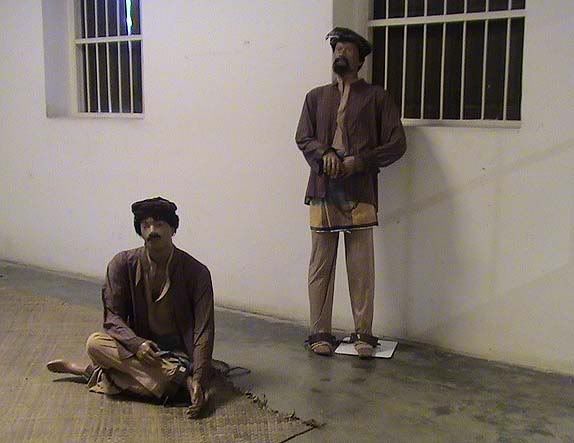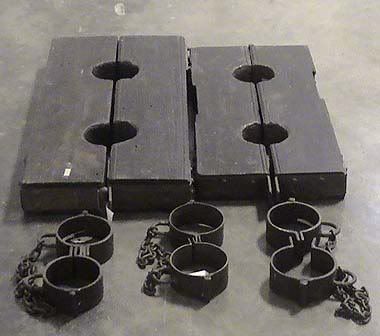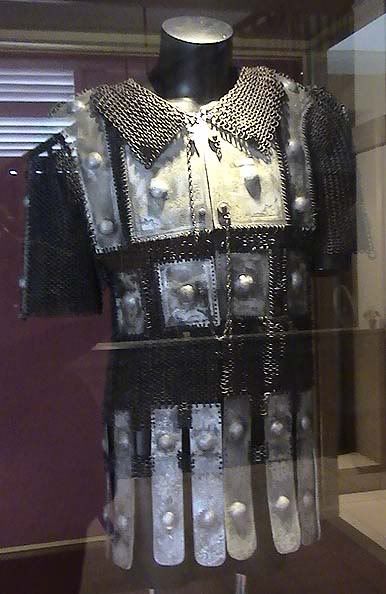Datuk Sagor was one of the key players in the uprising against British intervention in Perak in the 19th century. Yet for Rayhana Mohamad Abbas, a descendant of Datuk Sagor, keeping his legacy alive is no easy task.
The name and spirit of the warrior is immortalised in the Institut Datuk Sagor (IDS), a centre to promote excellence now under Rayhana's management."I was offered by the family-owned Koperasi Pembangunan Keluarga Hj Mohamed Perak to manage IDS and I accepted it with pride as I could contribute to the family," she said.
Rayhana, 32, who is IDS general manager, is a fourth generation descendent of Teh Nasa, the sixth of Datuk Sagor's nine children. The Teluk Intan-born lass left her public relations executive job with a local cosmetic company to take charge of IDS that was in a state of decline then.
DATUK SAGOR'S LEGACY
Datuk Sagor was actually the term for anyone holding the Datuk Seri Agar Diraja Orang Besar Delapan Perak title. The legendary Datuk Sagor's actual name was Ngah Kamdin.
The murder of the British Resident J.W.W. Birch in Pasir Salak on Nov 2, 1875 etched Datuk Sagor's name in the Malay annals. Along with others like Datuk Maharaja Lela, the leader, Si Puntum, Pandak Endut, Che' Gondah, Ngah Ahmad, Laksamana Mohamad Amin, Syahbandar and Che' Ngah Ibrahim, Datuk Sagor had conspired to kill the first British Resident.
Following the incident, the British conducted a swoop to capture those who murdered Birch. Within a year all those involved were captured and brought to trial. Datuk Sagor, Datuk Maharajalela and Si Puntum were among the five who were found directly involved in Birch's murder, and they were sentenced to death. Raja Abdullah and the rest were banished to the Seychelles Islands in the Indian Ocean. While awaiting execution, the five were incarcerated at the Ngah Ibrahim Fort in Matang.
HISTORY AND MYTHS, THE SELLING POINT
"Though the historical records of Datuk Sagor are easily available, there are many myths linked to him that have to be verified," said Rayhana."I used to hear many things from my family and the locals regarding Datuk Sagor's mystical powers and this can complement the historical records available."One of them is that after the execution, Datuk Sagor's body was cut into two and buried at the opposite sides of the Larut River as it was feared that he could rise from the dead.
"Through research, these myths can be shared with the visitors to IDS. The information can be used as a selling point for IDS," Rayhana said.Other then the history relating to Datuk Sagor, she felt that several nearby locations like Pasir Salak, Kampung Gajah and Bukit Tunggal should be given attention as they are among the state's historical landmarks.
NEW LEASE OF LIFE
It takes a 45-minute drive from Ipoh town to reach IDS. The centre constructed by the Perak government in the 1980's had lost its lustre over the years and ended up in a sad state of affairs. Realising that something had to be done to revive IDS, the gutsy Rayhana, probably with the same determination like her ancestor Datuk Sagor, took control of things.
"When we took over the management in June last year, IDS was in a deplorable state with many saying the end was inevitable," she said. Looking at the situation then, she decided to give IDS a new lease of life with a RM 100,000 allocation to improvise the institute. Now the black and white buildings are again ready to host programmes like motivational camps, leadership courses and educational events.Apart from the main buildings, the IDS has two hostel blocks, a meeting hall, a dining hall, surau, three chalets, parade ground and training ground for programme participants.
IMMORTALISING THE FAMILY NAME
The Ngah Kamdin multi-purpose hall which can accommodate 200 people is named after Datuk Sagor, and so are several other facilities there named after his children to immortalise the Malay chieftain's legacy.
The others are the Toh Puan Lipat banquet hall and the two hostel blocks, Teh Nasa and Alang Siap. Among the activities which can be conducted here are brain-storming sessions, guidance sessions, group workshops, treasure hunts, jungle trekking, kayaking, rafting, river crossing, camping and many more. IDS also offers progammes in confidence building, leadership, self-improvement, organisational management and team building.
"Programme participants can also take the opportunity to visit historical sites like the Pasir Salak Historical Complex and go for jungle trekking at Bukit Tunggal, the only hill here," Rayhana said.
According to her, Bukit Tunggal was once under the jurisdiction of Datuk Sagor. Despite Rayhana's efforts, the centre's future will be in jeopardy without the support from various parties.The mother of two could not hide her frustration with the locals who seem to be indifferent to the activities conducted at IDS. She said most of the time the locals stayed away from its activities."One of the reasons why we are re-invigorating the institute is because we want to contribute to society other than providing job opportunities, and we hope that in turn the locals will participate in our activities," she said. She urged the state government, local leaders and non-governmental organisations to lend their support by taking part in the activities conducted by IDS. As for Rayhana, IDS is not only special to her family, but also in keeping alive the legacy of a Malay warrior.
IDS hotline 05-6311980 atau e-mel: datosagor@yahoo.com.



